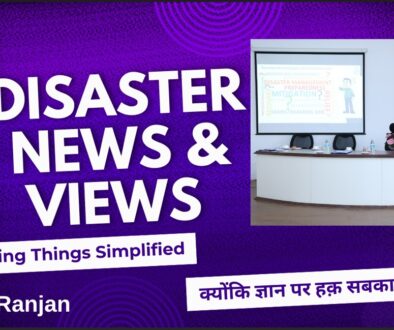COP25: Stop the climate emergency – and step up investment in adaptation and risk reduction
 COP25
COP25
Governments meeting at COP25 must invest more in risk-reduction strategies and minimise the loss and damage experienced by poorer communities – now.
by Bijay Kumar, GNDR Executive Director
GNDR members and secretariat staff are attending the yearly United Nations Climate Change Conference on 2-13 December 2019 in Madrid. We’ll be advocating for an increase in funding for resilience building at the local level, and greater involvement of at-risk communities in decision-making.
Climate change is increasing the frequency and intensity of natural hazards, and combined with economic inequality, is already causing lives, incomes and assets to be lost and damaged.
The poorest and most marginalised people are often disproportionately impacted – particularly those in the global south. They don’t have the money, resources and political structures to withstand or recover from extreme weather events like flooding or droughts.
Governments must take action to mitigate climate change by reducing greenhouse gas emissions. But mitigation initiatives can’t be the only solution. We need to adapt to the consequences of climate change, and address current and potential loss and damage – not only by transferring risk via insurance but by taking action to reduce risk.
Climate change adaptation
Adaptation initiatives seek to lower the risks posed by the consequences of climatic changes. We want governments to:
- Integrate risk assessments into adaptation planning: Governments should align national DRR strategies (SFDRR Target E) with National Adaptation Plans
- Engage at-risk communities in adaptation planning. Governments should include risk reduction initiatives undertaken by communities
- Set-up local-level monitoring: Ensure that the effectiveness of adaptation interventions can be assessed by those who are meant to benefit from them
- Increase investment in adaptation activities, as a proportion of overall budgets to address climate change
Loss and damage
Some of the negative impacts of climate change are now unavoidable. These are referred to as “loss and damage”, and include past, present and future impact. To address this we want governments to:
- Establish a dedicated fund for resilience building. This should be set up by the Warsaw International Mechanism (WIM), with richer countries paying in and communities at-risk withdrawing funds. Allocation should be decided by a group of national governments, UN agencies, civil society organisations.
- Ensure initiatives are informed by at-risk communities. The WIM needs to incorporate real-life experiences of loss and damage into its decision-making by consulting with communities via civil society organisations.
- Work with civil society organisations to implement risk reduction activities – because they bring the voices from the communities and have experience in implementing coherent projects at the local level
- Coordinate a global report to measure and map loss and damage, recognising both economic and non-economic loss and damage
Our demands to governments for COP25 are based on a consultation with GNDR members actively engaged in climate discussions and are aligned to the demands of key climate-focused civil society networks.
Content retrieved from: https://gndr.org/news/item/2009-cop25-stop-the-climate-emergency-and-step-up-investment-in-adaptation-and-risk-reduction.html.





DNV For the Week 14th to 22nd December, 2019 • Disaster News & Views - Sharing information for Disaster Resilience and Sustainable Development.
December 25, 2019 @ 11:37 pm
[…] CoP 25 […]